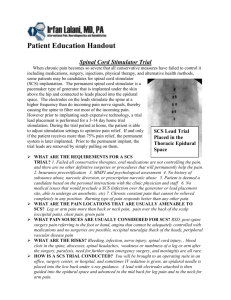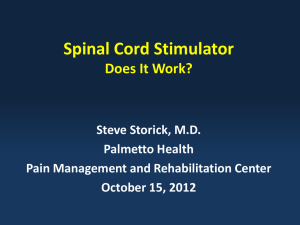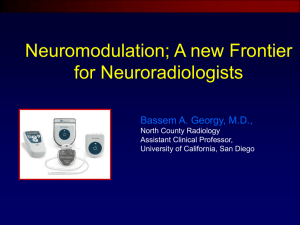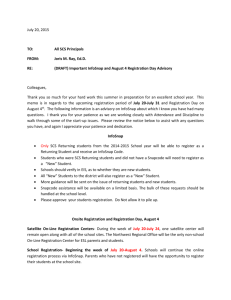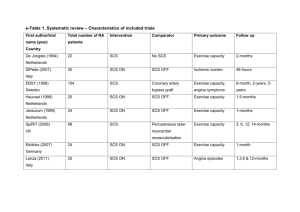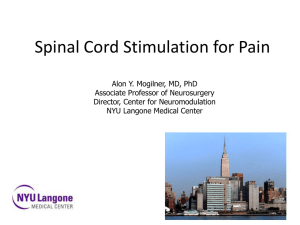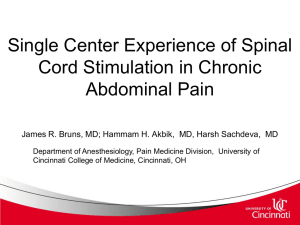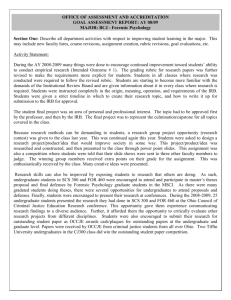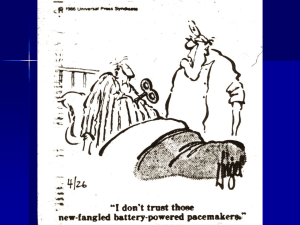ADVANCED PAIN MANAGEMENT SURGERY, INC
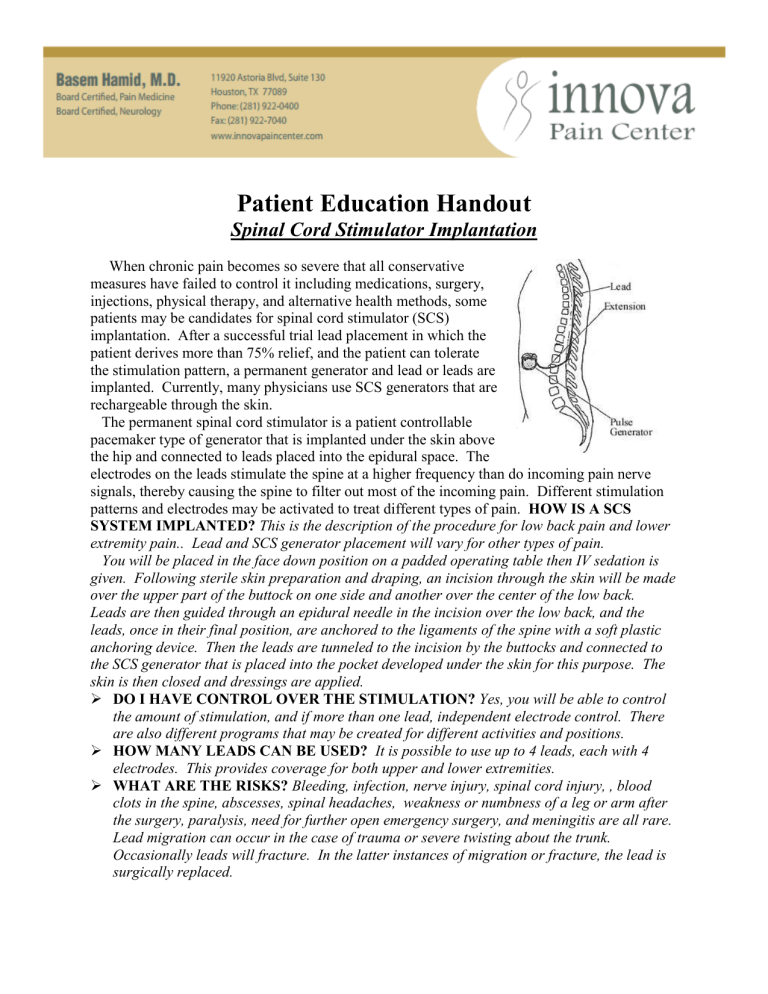
Patient Education Handout
Spinal Cord Stimulator Implantation
When chronic pain becomes so severe that all conservative measures have failed to control it including medications, surgery, injections, physical therapy, and alternative health methods, some patients may be candidates for spinal cord stimulator (SCS) implantation. After a successful trial lead placement in which the patient derives more than 75% relief, and the patient can tolerate the stimulation pattern, a permanent generator and lead or leads are implanted. Currently, many physicians use SCS generators that are rechargeable through the skin.
The permanent spinal cord stimulator is a patient controllable pacemaker type of generator that is implanted under the skin above the hip and connected to leads placed into the epidural space. The electrodes on the leads stimulate the spine at a higher frequency than do incoming pain nerve signals, thereby causing the spine to filter out most of the incoming pain. Different stimulation patterns and electrodes may be activated to treat different types of pain. HOW IS A SCS
SYSTEM IMPLANTED? This is the description of the procedure for low back pain and lower extremity pain.. Lead and SCS generator placement will vary for other types of pain.
You will be placed in the face down position on a padded operating table then IV sedation is given. Following sterile skin preparation and draping, an incision through the skin will be made over the upper part of the buttock on one side and another over the center of the low back.
Leads are then guided through an epidural needle in the incision over the low back, and the leads, once in their final position, are anchored to the ligaments of the spine with a soft plastic anchoring device. Then the leads are tunneled to the incision by the buttocks and connected to the SCS generator that is placed into the pocket developed under the skin for this purpose. The
skin is then closed and dressings are applied.
DO I HAVE CONTROL OVER THE STIMULATION? Yes, you will be able to control the amount of stimulation, and if more than one lead, independent electrode control. There
are also different programs that may be created for different activities and positions.
HOW MANY LEADS CAN BE USED? It is possible to use up to 4 leads, each with 4
electrodes. This provides coverage for both upper and lower extremities.
WHAT ARE THE RISKS? Bleeding, infection, nerve injury, spinal cord injury, , blood clots in the spine, abscesses, spinal headaches, weakness or numbness of a leg or arm after the surgery, paralysis, need for further open emergency surgery, and meningitis are all rare.
Lead migration can occur in the case of trauma or severe twisting about the trunk.
Occasionally leads will fracture. In the latter instances of migration or fracture, the lead is
surgically replaced.
WHAT ARE MY LIMITATIONS AFTER THE IMPLANTATION? At this time patients with SCS implants cannot have MRI or MRA of any kind. If spinal imaging is required, a CT myelogram may be performed. Patients should not drive with the SCS turned on for 2 months. No low or mid back massages ever after a SCS implant. You should not lift your hands above your head, perform any heavy lifting, sleep face down, or do any significant bending or twisting at the waist for 2 months. After this time, you may gradually
resume normal activities
-SPECIAL INSTRUCTIONS: Nothing to eat or drink after midnight on day of the procedure except the patient may drink WATER ONLY up to 8 hours before the
procedure. DO TAKE ALL OTHER USUAL MEDICATIONS WITH SMALL AMOUNTS OF
WATER ON THE DAY OF THE PROCEDURE. You will need a driver afterwards and
should have a caretaker remain with you the day and first night after surgery.
SPECIFIC MEDICATIONS TO HOLD: Stop Plavix 7 days before the procedure
Stop coumadin and warfarin 5 days before the
Procedure. Stop Ticlid ( ticlopidine)
14 days before the procedure.
AFTER THE PROCEDURE: You will stay in recovery for about 45 minutes after the procedure and should be able to drink juices and have a clear head before discharge without any leg weakness or significant numbness. Your SCS will be programmed during your time in the recovery unit.
DISCHARGE INSTRUCTIONS:
• Diet: Resume a normal diet immediately.
• Medications: Resume normal medications unless otherwise instructed and take your antibiotics as prescribed for 7-10 days. Tight control over diabetes during the first 10 days helps reduce infection rates by two thirds. Narcotics may be continued, and if possible, we will begin weaning some of the narcotics after 4-8 weeks.
• Dressing:
You will have a small dressing placed over the lead and SCS implant sites. No immersion bathing or showering until the wounds are checked after 7-10 days.
•
NOTIFY YOUR PAIN PHYSICIAN IMMEDIATELY
for new onset or worsening numbness or leg weakness not known to the surgeon, loss of bowel or bladder control, fever of >101.5 degrees, severe increase in low back pain, any drainage from beneath the bandages, severe headache or chills, inability to urinate, severe nausea, stiff neck, oversedation, slurred speech, incoherency, shortness of breath, or significant change in stimulation pattern.
